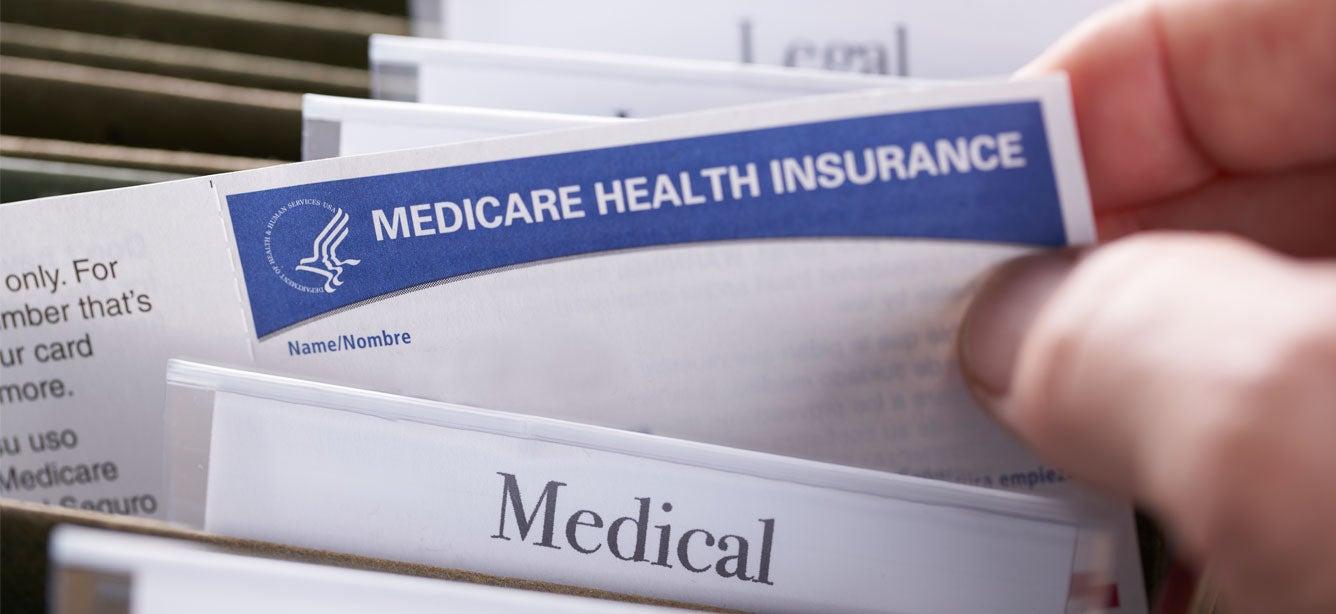
There’s so much to look forward to and enjoy when it comes to your retirement years. Spending time with family and friends. Traveling. Focusing on hobbies. Taking on new endeavors. Volunteering. Working a lighter schedule—or not at all.
Some of your plans may depend on the funds you have available after paying routine bills, including big ticket expenses such as transportation and housing. As you budget for your retirement, keep in mind another significant, often-underestimated expense: health care.
American couples generally estimate that their health care will cost $75,0001 over the course of their retirement, but they may not be considering the potential for much higher costs due to health, retirement age, location, and longevity. Fidelity’s recent Retiree Health Care Cost Estimates show that a couple retiring at age 65 will spend an average of $330,0001. And it’s likely that the total expenses will increase over time, due to inflation and the increasing cost of medical care and services.
Why you should anticipate the cost of Medicare in retirement
One factor that can lead to underestimating health care costs is a widespread misconception about Medicare, the federal program most people ages 65 and over rely on for their health care coverage. It isn’t free, in spite of all the years you contributed through your payroll deductions.
If you opt for only original Medicare (Medicare Part A and Part B), you may qualify for Part A (hospital coverage) without paying a monthly premium, but you may have to pay copayments and deductibles, if you don’t elect additional coverage. For Part B (medical coverage), most people pay a monthly premium that can include a surcharge based on income—plus 20% of the cost of covered care, services, and items.
Many people purchase additional private coverage to help defray out-of-pocket costs. Private additional coverage may include a Medicare Supplement (Medigap) plan, often in combination with a Part D (prescription drug) plan, or a Medicare Advantage plan with or without prescription drug coverage.
Your choice of a Medicare plan is an individual one—and the expenses associated with it could have far-reaching effects. That’s why it’s so important to consider Medicare costs when you’re planning for retirement—and even when reassessing your ongoing retirement budgeting year to year. Health care is such a big variable, especially in your later years. And your health care spending may make up an increasingly large portion of your spending as you age. There’s always the possibility of additional expenses you can’t plan for, such as an unexpected diagnosis or need for expensive medications.
How to incorporate Medicare expenses and rules into your plan for the future
Contribute to a health savings account
While it’s more effective to start contributing to a health savings account (HSA) well before retirement, any money you can save this way is helpful, especially because it offers a triple tax advantage. Paired with a high-deductible health plan, an HSA lets you save and invest pre-tax dollars. Sometimes employers contribute as well. And if you’re at least 55, you can make an extra $1,000 catch-up contribution to your HSA every year, until you start on Medicare.
Those saved HSA funds can grow and then be withdrawn tax-free to pay for qualified medical expenses—before or during retirement. In retirement, you can use them for qualified medical expenses associated with Medicare (except for the premiums for Medicare Supplement plans). But there’s more to learn about how HSAs work with Medicare. For example, depending on when you plan to enroll in Medicare, you may need to stop HSA contributions up to six months before you sign up. If you make HSA contributions while you’re enrolled in any part of Medicare, you may have to pay tax penalties.
Impact of your pre-retirement income
If you’re one to three years away from enrolling in your first Medicare plan, consider your current income and, if you can, consult a financial advisor to discuss options. The Social Security Administration (SSA) will review your tax returns from the two years before you join Medicare to determine how much you’ll pay in Part B and Part D premiums. If you have a higher income, SSA may add an Income Related Monthly Adjustment Amount (IRMAA) surcharge to your base premiums.
If something happens to reduce your income and you already pay IRMAA, you can ask SSA to consider your current income instead. This may lower or remove your IRMAA surcharge. Qualifying life changes include a change of marital status, loss of pension, retirement, a cut in hours worked, or loss of an income-generating property (for reasons beyond your control).
Determine your fixed health care costs
For planning purposes, estimate your predictable Medicare and health-related costs. Monthly premiums remain fixed during a plan year, so you can figure out the total easily.
If you can, set aside money to cover what you expect to need for deductibles, copayments, and coinsurance, all of which can vary based on the type of plan you choose. These expenses can add up quickly. Take time to list your regular needs and what they’ll cost—for example, expected doctor visits, durable medical equipment, physical or occupational therapy, behavioral health care, and prescription medications. Then factor in some extra funds for unexpected medical expenses.
If you’re able to get a firm grasp on what those basic costs will be, another important step is to recognize that those charges will probably go up a small amount each year.
Find the right plan for your budget and lifestyle
There are many opinions about types of Medicare plans, but the right choice for you will depend on your long-term retirement plans, anticipated lifestyle, health care needs, and other aspects of your personal situation.
- Your enrollment window may depend on when you decide to retire and whether you have employer- or union-sponsored coverage beyond age 65. Make sure to sign up for Medicare on time to avoid gaps in coverage and late enrollment penalties.
- Original Medicare with a Part D prescription drug plan covers a variety of services and expenses. That may be as much coverage as you expect to need. But keep in mind that the remaining expenses can add up quickly, and you would be responsible for those costs (unless you have other coverage, such as through the Veterans Administration). That’s why you may want to consider how Medicare Advantage and Medicare Supplement (Medigap) plans may help you cover the costs not covered by original Medicare.
- If you usually receive your health care close to home, a Medicare Advantage plan with a limited provider network may cover your preferred medical professionals and facilities.
- If you do a lot of traveling, within the U.S. or internationally, consider a Medicare Supplement plan that covers you away from your home base. Be aware that there are sometimes restrictions on international coverage.
- If you choose a Medicare plan that doesn’t cover international medical care, consider buying travel health insurance for trips, even though it increases your expenses. If it turns out that you need care while you’re away, the cost of not having travel health insurance can be high.
- If you have homes in different ZIP Codes, be sure your chosen Medicare plan operates in the ZIP Code where your primary residence is located and still covers you when you’re in your second home.
Retirement planning is an ongoing process. Evaluate your anticipated Medicare costs when you assess your expenses and plans—and reassess them regularly as the years go by. Staying aware of your options and cost increases can be helpful as you navigate your later years.
Source
1. Fidelity. 2024 Retiree Health Care Cost Estimate. Released on August 8, 2024. Found on the internet at https://newsroom.fidelity.com/pressreleases/fidelity-investments--releases-2024-retiree-health-care-cost-estimate-as-americans-seek-clarity-arou/s/7322cc17-0b90-46c4-ba49-38d6e91c3961



